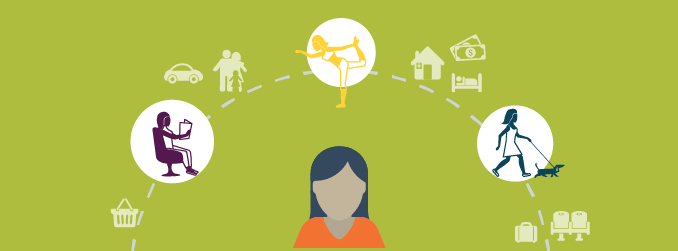
Communicate the value of voluntary benefits during uncertain times

Communicating about employee benefits in the midst of the legislative swirl in Washington may have its challenges, but the hype surrounding efforts to repeal or replace the Affordable Care Act also presents an ideal opportunity for your voluntary benefits to gain some real traction.
Your people are worried about possible changes to their medical benefits, and while you may not have substantive information about how decisions from the Capitol might affect them, you can—and should—remind employees that you have their backs. Your core employee benefits are designed to help them remain financially secure while they take care of themselves and their families, and save for their futures. And the additional voluntary benefits employees can choose from—the ones that supplement what you offer and underwrite—can help them build great financial security, even if employees have to cover the cost themselves.
Employers do their best to design core benefits to meet the needs of all employees. But these days—when a workforce can span up to five generations—it’s a pretty good bet your standard benefits package isn’t meeting everyone’s needs. That’s where voluntary benefits come into play. These programs give your employees even more coverage, like money for when they get very sick, homeowners and auto insurance, protection against identity theft—even vet insurance for their furry loved ones. Voluntary benefits provide everyday protection and peace of mind above and beyond what your core benefits offer.
Communicating the value of the voluntary benefits safety net
This isn’t an easy time for your employees. A MetLife study found that 49% of employees are concerned, anxious, or fearful about their current financial well-being, while 63% of full-time employees with employer-provided benefits are worried about covering unexpected out-of-pocket costs.1
With so many struggling financially and looking for ways to relieve the stress, employers have an ideal opportunity to help them realize that voluntary benefits can offer the safety net they need. This is where your communications can have a real impact. Consider this:
- Only 30% of employees are actually aware of their voluntary benefits; and
- Of those who are aware of their voluntary benefits, 79% agree that they sound great but aren’t convinced they should reach for their wallets to pay for them.2
Clearly, it’s important that you reach out to employees who are aware of the voluntary programs available to them and to those who aren’t. To get started, look at your program data. Are there gaps in engagement? Unexpected results? Employees who are missing out on programs you know they could use? For example, if your 401(k) data show a sizable number of employees taking loans or making early withdrawals, follow up with surveys, focus groups, or one-on-one interviews to dig a little deeper. Based on your findings, develop targeted messages for different segments of your workforce, depending on need and utilization rates.
Something else to keep in mind: Results from a recent Bankrate.com survey revealed that almost 6 in 10 Americans don’t have enough savings to cover an unplanned or emergency $500 or $1,000 expense, and 3 out of 5 Americans had an unexpected expense last year. So, it shouldn’t come as any surprise that the two voluntary benefits experiencing recent double-digit growth are critical illness and accident insurance. Both provide employees with coverage beyond what their core medical benefits offer, and counter the need for them to dig into 401(k) and other savings when faced with a big health issue. Next to the penalties they’ll pay for tapping into these accounts—or the out-of-pocket costs they may be facing—the premiums for these policies may feel like a better alternative.
And what if employees are out of work for a long time or need extended care? That’s where disability insurance and long-term care coverage can really pay off. These more traditional voluntary benefits—and others like them—are designed to support your employees’ health and financial well-being. After all, how can someone recovering from a serious accident or illness handle the additional stress of discovering they’re also in a boatload of debt?
They can’t. And neither can employees who are just plain financially stressed. More than 3 in 5 survey participants in the DC Investor Survey reported a moderate to high level of financial stress, and as many as 4 out of 10 said financial stress caused their work productivity to suffer. All the more reason to ensure you’re communicating about all the benefits you offer, not just your core programs.
Segmenting and targeting for broader appeal
While more traditional voluntary benefits may have broad appeal across your workforce, other, more non-traditional voluntary benefits, such as child or elder care, legal services, identity theft insurance, pet insurance, and education assistance, are likely to appeal to different segments of your workforce.
A great way to communicate the value of all your programs—core and voluntary—is by showcasing them on your website. If you read our blog regularly, you’re well aware that we advocate for benefits information to live on responsive benefits websites that are built outside firewalls and accessible to employees and their families, wherever they may be. The goal is to drive employees to your site for detailed information when you target messaging to them.
To ensure your voluntary benefits are getting their share of attention, communicate them alongside your core programs so employees understand how they add value. It all comes down to the way you’re communicating about them.
Successful communication is key to driving engagement with benefits—core and voluntary— and a solid communications strategy is the best way to ensure you communicate effectively. Use our strategy guide to create winning communications for all your benefits. Or reach out and let us know how we can help.

Stacey Simon, Senior Writer, is the creative mind behind many of our most successful campaigns for our corporate, public sector, and multiemployer organizations.
